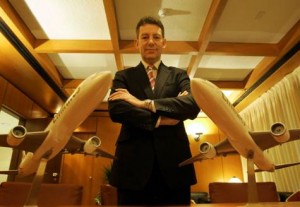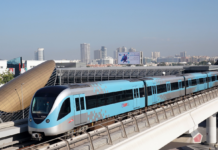By Saifur Rahman, Business Editor www.gulfnews.com
Dubai: The Dubai World Central-Al Maktoum International (DWC-AMI) is expected to be connected to the Dubai Metro and later to the Union Railway which will help it to serve a wider catchment of passengers beyond Dubai, when fully developed by 2020, a top official said.

“I know that the Roads and Transport Authority (RTA) and the Union Railway company is talking to integrate the DWC-AMI in to their network which will help passengers as we look to serve 160 million when the airport is fully developed,” Paul Griffiths, Chief Executive of Dubai Airports, a Dubai Government-owned company that will operate both airports, told Gulf News at the Air Show.
The DWC-AMI will have six concourses, two terminals, five runways and associated facilities to serve 160 million passengers and 12 million tonnes of cargo per annum, when completed.
It will be part of a huge 140 square kilometre development called Dubai World Central that will include the Dubai Aviation City, Dubal Logistics City, Dubai Exhibition City, the Commercial City, the Residential City a Golf Course and Resort cluster.
DWC-AMI will be at the core of its operation as the centrepiece development.
Emirates airline could shift its hub to Dubai World Central-Al Maktoum International in about 2020, when Dubai’s new airport will be able to handle the traffic of Emirates by that time.
Hub shift
Emirates will not run operations at both airports, Griffiths said.
“Emirates will shift its hub to DWC-AMI when the airport becomes capable of handling such huge traffic and we are talking of the completion of five runways, two terminals and concourses,” he said.
“We are looking at the shortest possible time for the movement so that the transition could be smooth and quick.”
Meanwhile, the airport operator has begun hiring people to manage the new airport in Jebel Ali which will open next June for cargo traffic.
Passengers will begin using the airport in October, passing through a temporary terminal that will have a capacity of five million passengers per year. It will be used as a stop-gap facility until the major terminals are constructed by about 2015-2016.
“Yes, we’ve started hiring people for the new airport,” he said.
“We have set up a small transition team to start operations at the airport and we will add more people as we go by. In the meantime, we are also internally moving people and promoting some who have done well in their existing roles.”
Despite the current economic crisis, Griffiths said, the airport has done very well.
Its October traffic data shows double-digit growth over last year’s October traffic and the airport is on track to handle more than 40 million passengers by the end of this year.
“We are very optimistic about the continuous growth due to the ongoing developments around us, especially with Emirates and flyDubai and the overall developments across the region,” Griffiths said.
“We anticipate a 10 per cent compound annual growth for the next 10 years for Dubai International, based on our own projections on air traffic.”
















